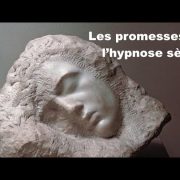How’s your self-control? Do you find yourself quickly abandoning plans you take on? Do you have difficulty tolerating frustration? For Jeffrey Young, insufficient self-control could be due to how you relate to the boundaries you impose on yourself.
More specifically, Young refers to difficulties related to goal setting and the ability to self-reinforce. These are some of the aspects that intervention via schema therapy tries to promote. However, what’s a schema?
“The goal of schema therapy is a process of self-discovery and transformation in which patients learn to identify and deal with dysfunctional patterns that are affecting their lives.”
-Jeffrey Young-
Schemas
A schema is a ‘learned way of living’ and is the result of an individual’s unique and idiosyncratic biographical history. Young identifies 18 schemas. Among them are self-sacrifice, failure, and subjugation.
Schemas are packets of data that indicate, unconsciously or automatically, how to react to life events. In effect, how and what you think, what you feel, and how you face the ups and downs of life. In fact, schemas are vehicles for survival. Indeed, in the past, their function was to support and protect the individual.
A sample case
To give an example, Louise is a patient who’s attending therapy. In her evaluation with Young’s Schema Questionnaire, she obtained a significant score in the insufficient self-control schema. Her behavioral patterns were as follows:
- Her mother appeared to her to be helpless and frequently asked her to help her with her daily tasks. Therefore, it was Louise who met the emotional needs of her mother. Consequently, her own needs were left unmet.
- Louise’s father was frequently irritable and quick to anger. In fact, it was common for him to say to Louise, in a hostile tone: “I don’t know why you always protect your mother so much”.
- There were few boundaries in Louise’s childhood. Since she was in charge of taking care of her mother, she assumed the role of an adult really early on. In reality, she could do whatever she wanted as long as she took care of her mother.
- Her parents never shared their problems, neither with each other nor with Louise.
In order to survive throughout her childhood, Louise did whatever she wanted. Currently, she claims that everything is boring for her and that she’s unable to focus on anything because everything she starts she abandons as soon as it loses its appeal.
Initially, her schemas were adaptive, since they promoted her survival. However, over time they became aversive and maladaptive. Indeed, when schemas exercise excessive control over an individual, they become self-sabotage schemas (Young, 2015),
“Schemas originate from reality-based representations and can initially generate responses tailored to them.”
-Jeffrey Young-
The insufficient self-control schema
The insufficient self-control schema characterizes individuals who can’t discipline themselves. They might refuse or find it difficult to exercise any self-control. Consequently, they succumb to the emotion of uncertainty, since they find it difficult or are unable to set boundaries for themselves.
As a result of this frustration, they conclude that it’s useful to restrict the influence of their emotional cosmos. In other words, they refuse to express their emotions and impulses. These intensify and a cycle of insufficient self-control and lack of self-discipline reoccurs (Young, 2015).
This schema is related to a deficit in autonomy. When the individual is an adult and is separated from their family, it’s difficult for them to function independently as the rest of the population does.
Furthermore, the expectations they have about themselves and about the context that surrounds them interfere when it comes to differentiating from the relationship they had in childhood with their parents. In the case of Luisa, now that she no longer has to take care of her mother but of herself, she doesn’t know how to do it.
“In the mildest form of this schema, patients have an exaggerated emphasis on the avoidance of discomfort. For example, they avoid most conflict or discomfort.”
-Jeffrey Young-
What can people with a lack of self-control schema do?
Considering going to a psychologist or psychotherapist can be a useful alternative for those with self-control deficits. This is because they usually lack two specific skills: self-control or the ability to contain their emotional experiences and drives and self-discipline or the ability to successfully cope with tasks that are boring and frustrating.
The objective of the intervention is to help recognize the intrinsic value of waiting. In other words, they need to do without immediate reinforcement to achieve their larger goals in the medium and long term.
For this, they must be able to express their whole universe of emotions. In addition, they must be encouraged to exhibit thoughts and behaviors that are contrary to those dictated by the schema. Some of the techniques that are used are listed below (Young, 2015):

Techniques used in schema therapy
- Carry out a cognitive restructuring. This means they learn the consequences of giving in to the impulse before it abducts them. In Louise’s case, between the emotion of frustration that she feels and the impulse to abandon everything and do something else (which she’ll later abandon), what is she thinking?
- Tasks between sessions. For example, getting organized and forcing themselves to complete tasks, even if they’re monotonous and cause boredom. They learn to be punctual or to structure their routine according to certain activities. The goal is to tolerate frustration. To achieve this, they have to get in touch with that emotion.
- Meditation strategies. They allow the individual to reach enjoyable and relaxing states. Moreover, they’re useful for distracting themselves and are recommended in schema therapy.
- Sometimes, the therapist may make cards containing reminders pointing out the reasons why self-control is important as well as the methods (restructuring, relaxation, or frustration tolerance) that they’ve taught the patient.
- The ability to reward acting achievements. When the patient is capable of self-control, they should provide themselves with a small gift. It could be an activity, a verbal recognition, or something material.
Origins in childhood
As you can see, a deficit of self-control could potentially have its origins in a childhood characterized by the absence of boundaries. In these cases, when the individual becomes an adult and a human being independent of their parents, they find that they don’t really know what to do, how to organize themselves, and structure their days. This causes them great frustration. On these occasions, schema-based therapy can be of great help.
Dysfunctional schemas often originate from early experiences of abandonment, neglect, or emotional abuse. And they can be treated through schema therapy.”
-Jeffrey Young-
The post Dealing With the Schema of Insufficient Self-Control appeared first on Exploring your mind.



















Comments